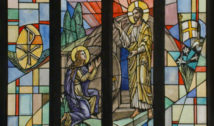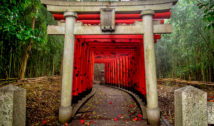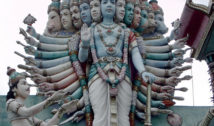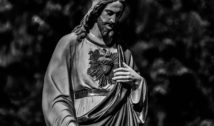The Japanese Festival of the Dead: Obon
- By Nathan Glover --
- 13 Jul 2016 --
Rituals and traditions of the Buddhist Obon Festival.
Obon or Bon is the Japanese festival celebrated to honor the dead and spirits of their ancestors. It is the equivalent of the Western or Christian’s All Soul’s Day except that Obon is a 3 day celebration and is marked by numerous religious and festive activities. Based on tradition, the festivity falls on the 13th to 15th day of the lunar calendar (August 13-15) but other regions, particularly those using the modern Gregorian calendar like Tokyo, will observe Obon on July 13-15. Though it’s not an official national holiday, many companies and businesses are closed allowing their employees to take a leave, be with their family and celebrate.
The Japanese Festival of the Dead: Obon[/tweetthis]
Religious significance of Obon
The celebrations held today are noticeably getting more secular focusing much more on the festive activities. But Obon has its deep cultural and religious roots. Obon is primarily a Buddhist celebration. The Japanese believe on the interconnection and interdependence of almost everything on earth from humans, nature, the elements and including the spirits. They give honor and express their gratitude not only to their immediate relatives who have recently passed away but also to their earliest human ancestors who lived decades, centuries and millenniums ago.
The Japanese believe that at the start of Obon, the spirits of their relatives and ancestors come back to the physical world and visit them. Aside from offering prayers and holding memorial services at Buddhist temples, individual houses and establishments hang lanterns believing that their lights will guide the spirits. And on the last night of Obon, people send off the spirits back to their world with the help of floating or paper lanterns, candles, bon fires, etc.
Major activities during the festivity
The highlight of the Obon festival is the dance parade or carnival called Bon Odori. In Bon Odori, the participants dance and sing in a circle around a raised platform called a yagura. Those in the parade usually dance in unison but the rest of the crowd is welcome to have their own steps, let loose and simply celebrate. In the festival’s long history, the different Japanese regions have come up with their own variation of the Bon Odori dance including its accompanying music.
Bon Odori has its Buddhist story. It is said that a disciple of Buddha (Mokuren or Maha Maudgalyayana) used his powers to peek into his deceased mother’s condition. Upon learning that his mother’s spirit was suffering in the Realm of Hungry Ghosts, he asked Buddha that her mother be released from that realm. Buddha instructed his disciple to make food offerings to the sangha or monks who came from their summer retreat. Mokuren did so and out of joy on his mother’s eventual release, the disciple danced and celebrated resulting to the tradition of Bon Odori.
.@kimnsin on #Periscope: ?????? What is Obon???a Buddhist custom?????????#Japan #jpnscope ???? https://t.co/YomWlESorc
— Naomi (@hatie123) July 7, 2016
Aside from Bon Odori, the Japanese also visit their relative’s graves, cleaning, restoring and decorating them usually with flowers. For others, the Obon festival is among the few opportunities to be away from work so it’s an opportunity to make it as a vacation holiday or reunion with family and friends.
The Obon festival is also celebrated by Japanese communities around the world.



















